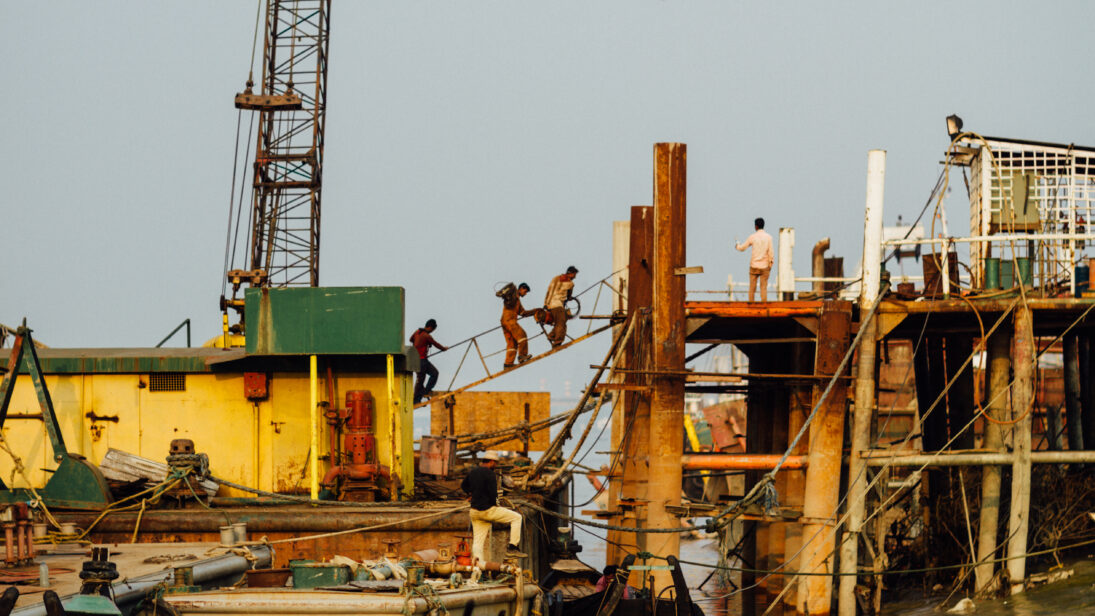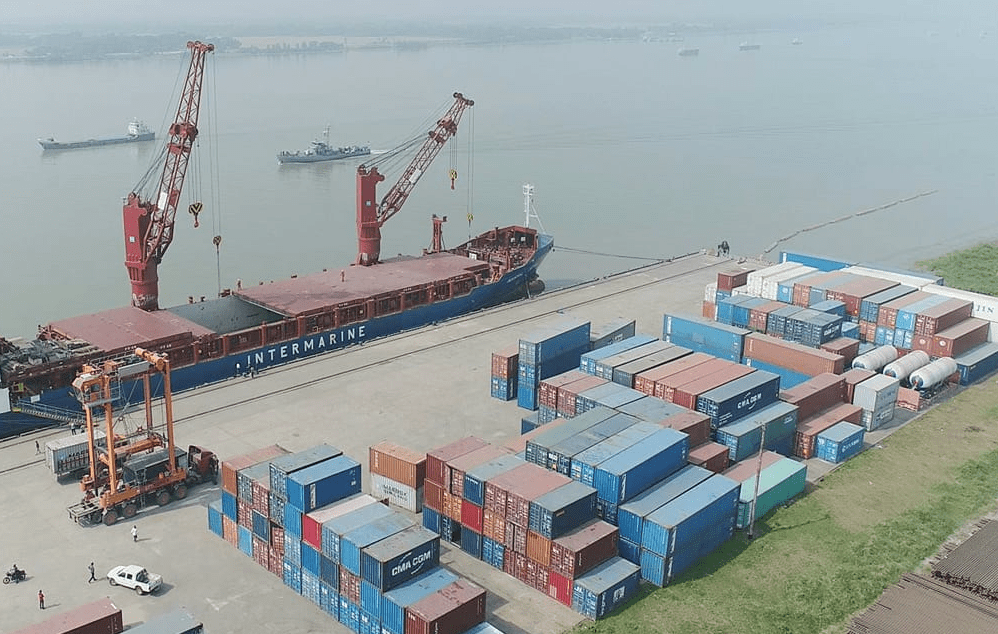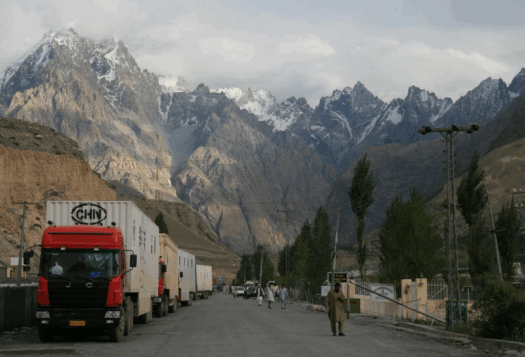
Bhutan and Bangladesh have historically enjoyed friendly relations, driven by shared national interests and trade ties. While Thimphu views the partnership as strategically important for its access to the sea, Dhaka values Bhutan as an important trade partner. To carry forward their economic ties, the countries recently signed an “Agreement on movement of traffic-in-transit and protocol.” The agreement allows Bhutan to use Mongla, Payra, and Chittagong ports to conduct trade with other countries.
The recent deal offers incentives for both countries. For Bhutan, the agreement brings an opportunity to expand and diversify its foreign trade through new trade partners and additional transit routes. For Bangladesh, the deal not only deepens bilateral trade and generates revenue, but advances Dhaka’s goal of increasing traffic through its ports in the Bay of Bengal. Increased traffic helps ensure continued investment flows through the country’s port infrastructure, bolstering the strategic importance of its location. Dhaka also expects support from Thimphu in various regional and multilateral forums alongside pursuing the hydropower-rich country to cooperate on electricity generation and trade.
India has taken a positive approach to the increasing cooperation between Bhutan and Bangladesh, and has also encouraged initiatives to boost connectivity between its neighbors through the Indian Territory.
Cooperation between Bhutan and Bangladesh has increased since 2019. Bangladesh allowed Bhutan to use its inland waters in 2019 and designated “Ports of Call” to facilitate foreign trade. In 2020, Bangladesh signed its first ever Preferential Trade Agreement (PTA) with Bhutan to expand bilateral trade. However, as Bhutan and Bangladesh strengthen ties, relations with their larger neighbor, India, are ever present. India plays a significant role in shaping regional dynamics due to its geographic and economic size, and aims to increase connectivity in the region. India has taken a positive approach to the increasing cooperation between Bhutan and Bangladesh, and has also encouraged initiatives to boost connectivity between its neighbors through the Indian Territory.
Presence of India and China in the Region
India has played a significant role in the development of both Bhutan and Bangladesh. For example, Thimphu receives the largest share of India’s development aid and assistance. India allocated around 38 percent out of its total Grants & Loans in the year 2022-23 to Bhutan, amounting to $276 million. In terms of trade relations, India accounted for 80 percent of Bhutan’s total external trade in 2021-22. While India has been central to Bhutan’s development, these figures also indicate the level of economic dependence. Lately, this dependence has started to worry Thimphu and its efforts to drift away from New Delhi have gained attention.
The latest agreement with Bangladesh will reduce Thimphu’s dependence on India to a certain extent. This move from Bhutan came largely as a response to the difficulties faced in its boulder exports to Bangladesh at the West Bengal Border. However, the initiative could prove to be beneficial for sub-regional connectivity as imagined by India in the Bangladesh, Bhutan, India and Nepal (BBIN) Motor Vehicle Agreement.
India has also played a significant role in Bangladesh. Dhaka and New Delhi have been cooperating on reviving the importance of Bay of Bengal through initiatives in sub-regional connectivity. The efforts are aimed at easing the movement of goods and services across the borders of Bhutan, Bangladesh, India and Nepal as well as facilitating access to sea routes. Notably, India’s assistance to Bangladesh’s infrastructure development, particularly port infrastructure, is far less than China.

A Commitment to Nonalignment
Amid China’s increasing presence in the country, Bangladesh has sought to carve out its own image in the region based on its economic growth. Dhaka has reached out to Nepal and Sri Lanka along with Bhutan to strike trade agreements and secure markets as well as resources for its growing economy. While New Delhi was worried about Bangladesh’s growing engagement with smaller as well as bigger powers such as China, it is bringing in other countries such as Japan to increase investments in the bay.
Beijing has also increased its proximity with Dhaka with the help of grants and loans under its development assistance program. Bangladesh has received China’s largest aid and assistance packages since 2020, including funding for key infrastructural projects including ports in Mongla, Payra and Chittagong. Additionally, Dhaka is also creating a Special Economic Zone for Chinese investors in Anwara Upazila, close to the port of Chittagong.
While Bangladesh has welcomed Chinese investments, Dhaka is cautious of developing dependencies on Chinese aid and assistance. The agreement with Bhutan could be a result of Bangladesh acting to avoid failures of these ports by attracting more traffic and thereby generating revenue from the neighboring countries. The success of these ports is key to a successful story of Bangladesh’s economy.
In South Asia, smaller states are careful in their approach towards the major powers, maintaining a non-aligned stance. Bangladesh has showcased its desire to balance by leaning towards the United States’ vision in the recent draft of its Indo-Pacific Outlook, which reasserts its support for a ‘free, open, peaceful, secure and inclusive Indo-Pacific’. It also emphasizes on maintaining the stability of the region to ensure economic prosperity.
Conclusion
Bangladesh’s economic expansion highlights the importance of its seaports alongside the Bay of Bengal. The strategic location of the Bay of Bengal can foster connectivity between South Asian and Southeast Asian countries. The development of these seaports is particularly crucial for the smaller landlocked countries of South Asia such as Nepal and Bhutan. Despite the potential, efforts towards regional integration have fallen short. The recent Bhutan-Bangladesh agreement in focus showcases the balancing act that India’s neighbors are trying to perform by resorting to bi-lateral frameworks. It is not likely to hinder their existing relations with India in the short run but points in a direction in which India needs to address their concerns.
The development of these seaports is particularly crucial for the smaller landlocked countries of South Asia such as Nepal and Bhutan. Despite the potential, efforts towards regional integration have fallen short.
The absence of stronger initiatives in the bay has provided China with an easy entry point. China’s involvement further complicates the already insecure relations between India and the smaller neighbors that are highly dependent on it. Bhutan has been expressing concerns of not only Chinese involvement but also of greater support for its trade and economic growth. In order to reap the benefits of the Bay of Bengal and individual economic growth, the South Asian states need to act in the direction of collective cooperation. Bhutan, Bangladesh, Nepal and India must initiate efforts to enhance the region’s infrastructure development and security utilizing the existing organizational arrangements in place to facilitate better integration in global trade.
Also Read: Trade in the Indo-Pacific: Moving Towards Gender Inclusivity and Openness
***
Image 1: Chittagong Port via Flickr
Image 2: Port of Mongla via Container News


